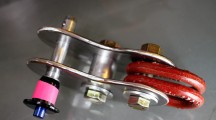A while ago I published a long-in-the-making article on my custom built Kofi webbing anchors. The article is really dense, but covers most of the aspects of designing a webbing anchor — I published it so that most readers can appreciate the work that the folks at Landcruising and Balance Community put into designing their […]
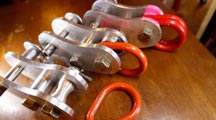
Kofi – the modular webbing locker
This article, for most readers, is meant to just be a bit of a curiosity. I am not encouraging you to build your own webbing anchor device. Why not? Well, unless you have access to: machining equipment; a qualified engineer who can double check that your materials and tolerances are safe for the loads the […]
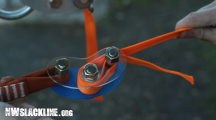
NWslackline guide to longlining (Part 2): Webbing Attachment
Knots and line lockers You have to attach the line to the anchor sling (and your tightening system) somehow. Since the beginning, slackliners were tying knots and using hitches to rig their lines. Sometime in the early-to-mid 2000s, the use of a chain-link line locker became popular. These reduce the ‘folds’ in the webbing, allowing […]
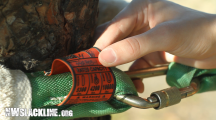
NWslackline guide to longlining (Part 1): Anchor Slings
This will be the easiest topic for us to cover, because there really isn’t that much to talk about. We need to discuss the different types of anchor slings, and the different ways you can rig them. In a broad sense, the two types of slings are “homemade” and “manufactured”. Homemade slings are anything you […]
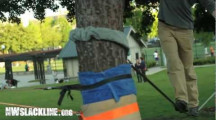
The ultimate in slackline tree padding
I’m always improving little aspects of my slackline setup, and in early 2010 I realized that the towel strips I was using would be way better if they were tubes instead of strips. I started using duct tape to make them into tubes, and then eventually began to sew them. The strips fray and give […]
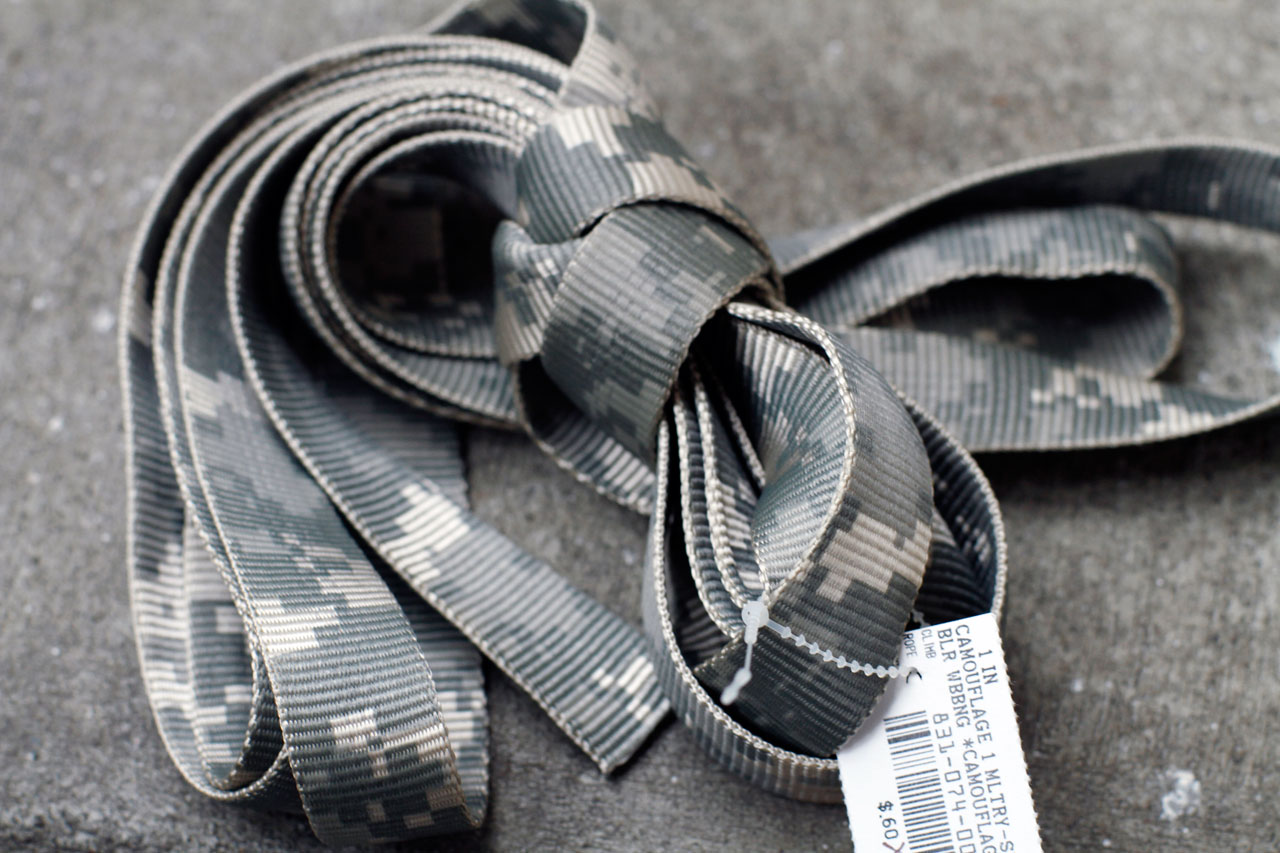
Camouflage webbing
I was at REI the other day and happened to notice a spool of camouflage webbing in the climbing department. Typically REI is not known for its adventurous webbing selection — Bluewater makes several colors of webbing yet green and purple are consistently the only two the REI stocks (possibly the two most boring colors […]
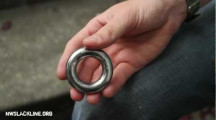
Break test: non-forged aluminum line locker
If you’ve spent any amount of time on this site you probably know I am a fan of line-lockers. They keep the webbing flat, protect it reasonably well, and for nylon webbing typically ensure about 95% of rated strength (instead of the 50 or 65% that a knot might). The first line lockers (that I […]
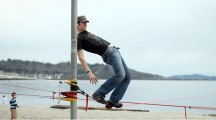
Different types of slacklines
It used to be that “slackline” meant any one-inch tubular rock climbing webbing pulled reasonably taut so that it could be walked by a human. Then people started using Type18 flat webbing. Then polyester webbings. Then 2-inch flat and tubular webbing. And so on. Rigging methods now involve not just the old-school “primitive” or “Ellington” […]
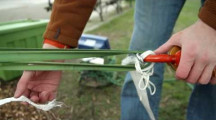
Mystery webbing
Sometimes deals can be found on webbing from obscure vendors, sometimes not; I ended up with 60ft of milspec this way once after ordering 60ft of Type18. Of course the vendor refunded me and told me to keep the webbing, so maybe that wasn’t such a bad deal. Just before we left for Ghana I […]
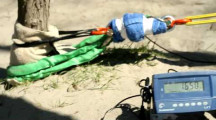
Destructive testing
Today marks the first installment in our “destructive testing” series. The purpose of this series of posts is to investigate what happens when stuff breaks, and how much force it takes to make stuff break. Safety is my number one concern, and my hope is that these experiments will help everyone to better understand how […]
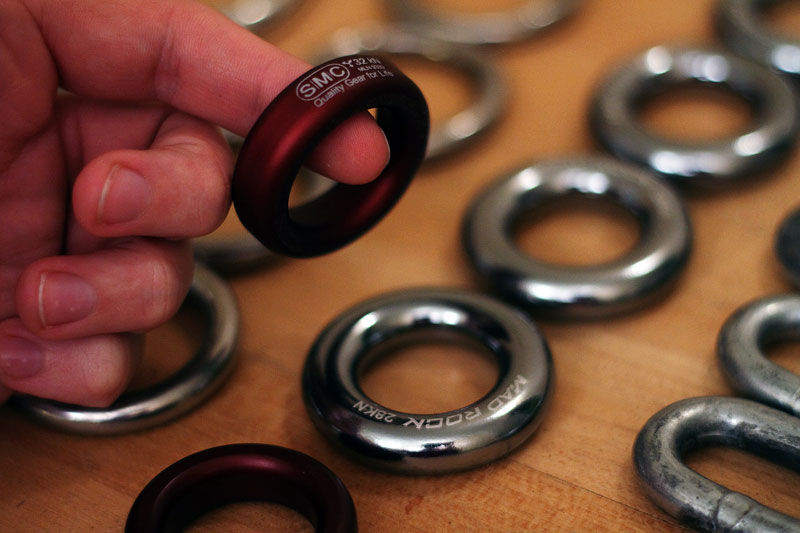
New line lockers from SMC
There’s a new line locker on the market that shows great promise for short lines. SMC (Seattle[ish]-based-rigging-hardware-manufacturer) has just released a collar-shaped 1″ inner diameter aluminum ‘rigging ring’ that looks to make a great line locker ($4.50 at REI as well as from SMC directly). I picked up a couple today and (magical time traveling […]
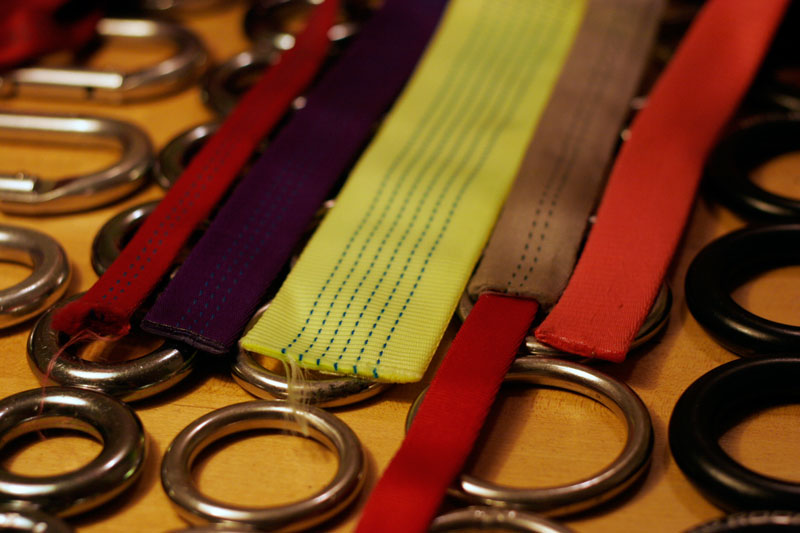
Webbing…
Slackline is different from tightrope, tightwire, slackrope, (etc) in that it uses a dynamic webbing. Although slackline webbing feels flat, and feels static when in your hands, it is actually a tube (that is stretched flat), and once you put your weight on it you can feel it is quite elastic. There is some semantic […]

